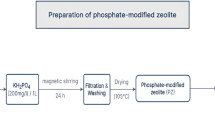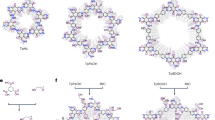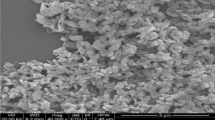Abstract
Attention has been focused recently on the production of new adsorbents from Moroccan oil shale of Tarfaya (layer R3) by chemical activation with phosphoric acid and its application in wastewaters treatment. The optimal conditions for the preparation were searched and the tests of adsorption of uranium and thorium ions were affected. The best product was obtained by used of the ratio of activated agent/precursor equal 3 and activation of the mixture in air at 250°C during two hours after prepocessing at 120°C in air. Under these conditions the maximal adsorption capacity of methylene blue and specific area (SBET) of the new adsorbent were 526 mg/g and 630 m2/g, respectively. A batch mode experiment was used to explore the performances of this adsorbent for the removal of the U and Th from aqueous solutions prepared from UO2(NO3)2.6H2O and Th(NO3)4.5H2O. The adsorption parameters for the two radioelements were determined by application of the Langmuir, Freundlich and Elovich models.
Similar content being viewed by others
Article PDF
Author information
Authors and Affiliations
Corresponding author
Rights and permissions
About this article
Cite this article
Khouya, E., Legrouri, K., Fakhi, S. et al. Adsorption of uranium and thorium on new adsorbent prepared from Moroccan oil shale impregnated with phosphoric acid. Nat Prec (2010). https://doi.org/10.1038/npre.2010.5098.1
Received:
Accepted:
Published:
DOI: https://doi.org/10.1038/npre.2010.5098.1
Keywords
This article is cited by
-
Uranyl peroxide ((UO2)(O2)·4H2O; UO4) precipitation for uranium sequestering: formation and physicochemical characterization
Journal of Radioanalytical and Nuclear Chemistry (2022)



